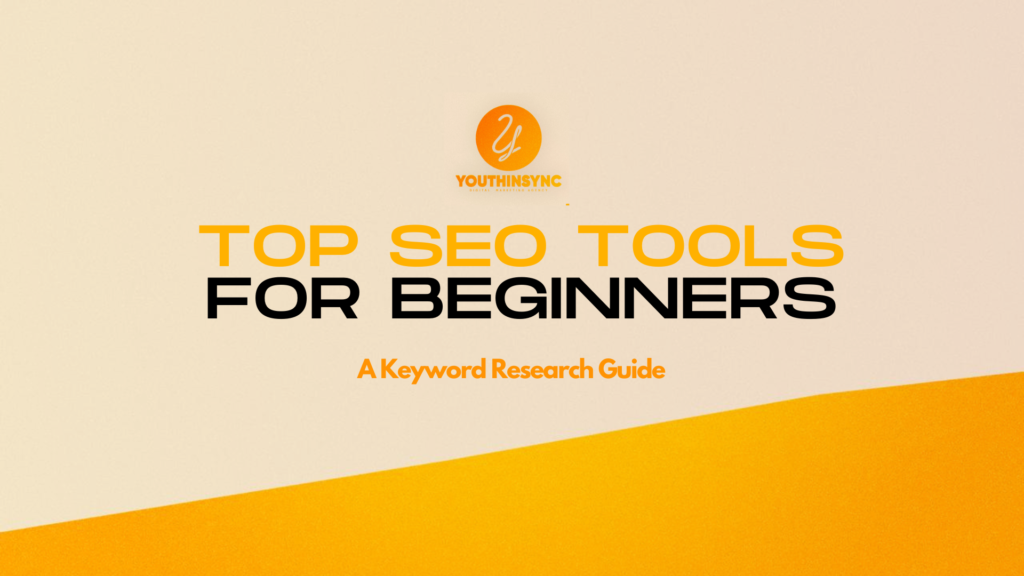SEO Tools for Beginners: Starting Strong with Keyword Research
Introduction In this digital landscape, mastering SEO (Search Engine Optimization) is crucial for online success. At the heart of SEO lies keyword research, a fundamental practice that can make or break your content strategy. For beginners, navigating the myriad of SEO tools can be daunting. This blog aims to simplify the process, guiding you through essential beginner-friendly SEO tools for keyword research. By adhering to the principles of Expertise, Authoritativeness, and Trustworthiness (EEAT), we provide a reliable and detailed roadmap to kickstart your SEO journey. Understanding Keyword Research What is Keyword Research? Keyword research is the process of identifying and analyzing search terms that users enter into search engines. It helps in understanding what your target audience is looking for and how to align your content with their search intent. Why is Keyword Research Important? Keyword research is vital because it: Drives targeted traffic to your website. Enhances your content strategy. Helps in understanding user intent. Improves search engine rankings. Beginner-Friendly SEO Tools for Keyword Research Choosing the right tools is the first step toward effective keyword research. Here, we present a selection of beginner-friendly SEO tools that are both powerful and easy to use. Google Keyword Planner Features: Free to use with a Google Ads account. Provides keyword suggestions based on relevance. Shows search volume and competition level. How to Use Google Keyword Planner: Sign in to your Google Ads account. Navigate to the “Tools and Settings” menu and select “Keyword Planner.” Choose “Discover new keywords.” Enter a keyword or a URL related to your niche. Review the list of keyword ideas along with their search volume and competition. Filter and prioritize keywords based on your goals. Example: If you’re running a blog about healthy recipes, entering “healthy breakfast recipes” will yield suggestions like “easy healthy breakfast,” “quick healthy breakfast,” and “healthy breakfast ideas.” Uber suggest Features: User-friendly interface. Provides keyword suggestions, search volume, and SEO difficulty. Offers content ideas and competitor analysis. Step-by-Step Guide to Keyword Research with Uber suggest: Visit Ubersuggest and enter your target keyword. Explore the keyword overview, including search volume and SEO difficulty. Click on “Keyword Ideas” to see a list of related keywords. Use the “Content Ideas” tab to find popular articles and content opportunities. Analyze your competitors’ top-performing keywords and strategies. Example: For a fitness blog, entering “home workout routines” will display related keywords like “best home workouts,” “home workout plan,” and “bodyweight exercises.” Answer The Public Features: Visual keyword research tool. Generates questions, prepositions, and comparisons related to your keyword. Helps in understanding user intent and generating content ideas. How to Use Answer The Public: Go to Answer The Public and enter your keyword. Review the visual map of questions, prepositions, and comparisons. Click on individual keywords to see search volume and related queries. Use these insights to create content that addresses specific user queries. Example: Typing “SEO tools” will provide questions like “What are the best SEO tools?” and “How to use SEO tools?” as well as comparisons like “SEO tools vs. manual SEO.” Keyword Tool Features: Generates long-tail keyword suggestions. Pulls data from Google Autocomplete. Offers search volume, CPC, and competition metrics in the paid version. Utilizing Keyword Tool for Keyword Suggestions: Enter your keyword into the Keyword Tool. Review the list of long-tail keyword suggestions. Sort and filter keywords based on search volume and competition. Export the list for further analysis and integration into your content strategy. Example: For an e-commerce site selling shoes, entering “running shoes” will generate long-tail keywords like “best running shoes for women,” “affordable running shoes,” and “running shoes for flat feet.” Moz Keyword Explorer Features: Comprehensive keyword analysis tool. Provides search volume, difficulty, and opportunity metrics. Offers insights into SERP features and keyword prioritization. Using Moz for Comprehensive Keyword Analysis: Sign up for Moz and access the Keyword Explorer. Enter your target keyword and review the overview. Analyze the SERP features and potential ranking opportunities. Use the “Keyword Suggestions” tab to find related keywords. Prioritize keywords based on difficulty and potential impact. Example: For a travel blog, entering “budget travel tips” will display metrics like search volume, difficulty, and related keywords such as “cheap travel hacks” and “budget travel destinations.” Identifying Keyword Gaps What are Keyword Gaps? Keyword gaps refer to the keywords your competitors rank for, but you do not. Identifying and addressing these gaps can enhance your SEO strategy. How to Identify and Fill Keyword Gaps Using the Tools: Conduct a competitive analysis using tools like Uber suggest and Moz. Identify the keywords your competitors rank for. Cross-reference these keywords with your existing content. Create new content or optimize existing content to target these gaps. Example: If your competitor ranks for “eco-friendly travel tips” and you don’t, consider creating comprehensive content on sustainable travel practices to bridge this gap. Best Practices for Keyword Research Tips and Strategies for Beginners: Start with Broad Keywords: Begin with broad terms and narrow down to specific, long-tail keywords. Prioritize Relevance: Focus on keywords that align with your content and audience. Understand Search Intent: Ensure your content matches the intent behind the keyword. Regularly Update Your Keywords: SEO trends change, so keep your keyword list updated. How to Prioritize Keywords: Use metrics like search volume, competition, and relevance. Focus on a mix of short-tail and long-tail keywords. Consider user intent and how it aligns with your content. Understanding Search Intent: Informational: Users seek information (e.g., “how to do keyword research”). Navigational: Users look for a specific website (e.g., “Moz Keyword Explorer”). Transactional: Users intend to make a purchase (e.g., “buy SEO tools”). Focus Keyword: SEO Tools Why “SEO Tools” is the Focus Keyword “SEO Tools” is a high-volume, relevant keyword that aligns with the topic of this blog. It is broad enough
SEO Tools for Beginners: Starting Strong with Keyword Research Read More »

